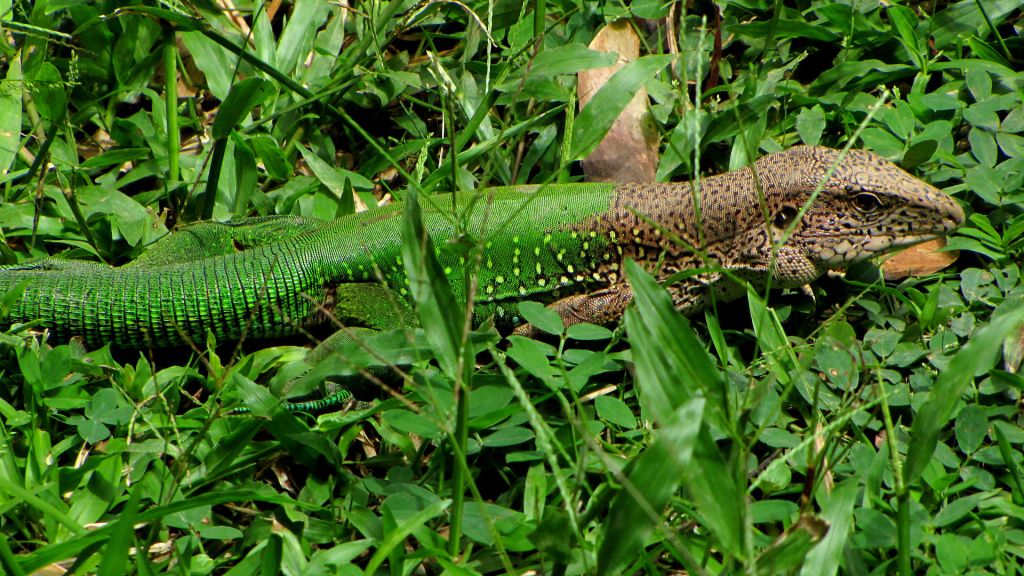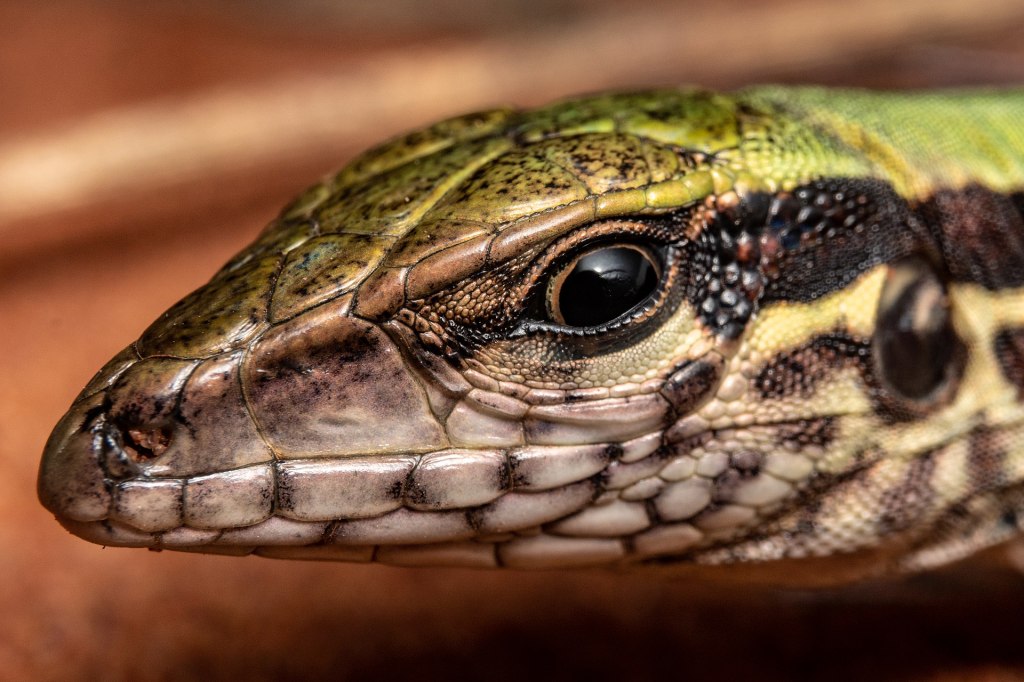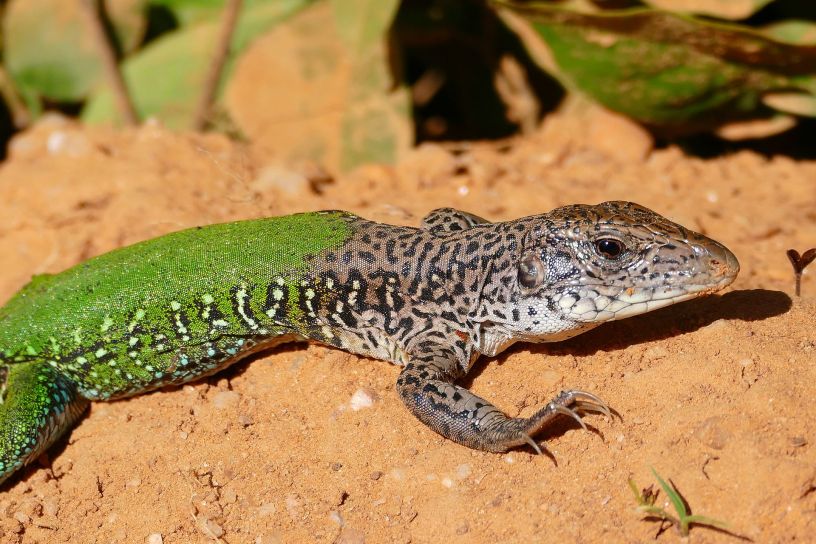Lizards are fun animals. They’re like snakes, but better, because they have legs. I imagine when a snake looks at a lizard the snake gets insanely jealous. And I can’t help but think every time a lizard glances at a snake they smirk at the poor legless creature.
Today’s animal is a lizard that belongs to the whiptail family, Teiidae. Giant ameivas live in Central and South America, and have been introduced to Florida. They are found in a range of habitats, but prefer rain forests that have recently been disturbed.

Image by D. Gordon E. Robertson, CC BY-SA 3.0, via Wikimedia Commons
Despite what their name might make you think, giant ameivas don’t get super big. Though I guess giant is a relative term, so maybe an ant named them. Giant ameivas grow to be a maximum length of 16 cm in females and 18 cm in males. Males are mostly bright green, with a brown head and light underbelly. Females are less vibrantly coloured than males.
Reproduction in giant ameivas depends on rainfall. In areas where there is a wet and dry season, the lizards will breed in the rainy season. When there is near constant rain, however, ameivas are able to breed year round. The female lays anywhere from three to eleven eggs, which hatch in five months. Male ameivas tend to grow faster than females, and the young become mature around eight months of age. Neither parent bothers to look after the eggs once they’re laid.
Giant ameivas have pores on the underside of their hind legs. These pores are used primarily for communication. They secrete chemicals which are signals to other ameivas, and are used in territorial marking and defence, predation, and sexual behaviours. It’s a strange way to communicate, but I guess it works for the ameivas.

Giant ameivas mainly subsist on insects, though as they get larger their diet starts to include larger animals, such as other lizards. Ameivas are preyed upon by birds and snakes (so I guess the snakes have the last laugh after all). They don’t have any special defences against predation, except for their speed. Their bodies are designed to move quickly, and they rely on this agility to escape their numerous predators. This is why an alternative (and more accurate) name for the giant ameiva is the Amazon racerunner.
I don’t know if anyone has ever held an ameiva race, but people do keep them as pets. They aren’t a great species to have though: they tend to be aggressive and are wonderful carries of salmonella. Still, they are brightly coloured, so people want to have them. I for one would rather not get bitten and contract nasty diseases, but then I’ve never really understood the draw of exotic pets.
Cover image by Bernard DUPONT from FRANCE, CC BY-SA 2.0, via Wikimedia Commons
